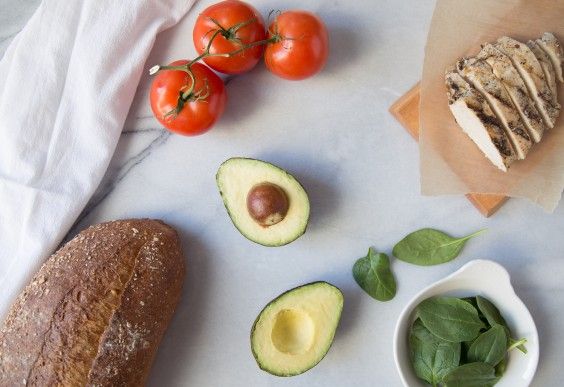Ask a friend or coworker about carbohydrates and you could get an earful: They’re bad for you. They’re fine—but only if you work out. They’ll make you gain weight. Or maybe: Low-carb diets are the only way to go.
Confused? You’re not alone. There’s a lot of legit information out there, but there’s also a lot of pseudo-science, making it hard to translate any of it into daily, healthy practices.
But before we dive into separating myth from fact, let’s get a few of the basics out of the way. Carbohydrates are one of the main nutrients your body needs, sometimes called macronutrients (There are three macros: carbs, protein, and fat). Carbs are the most important source of energy for your body. Your body will break down carbs into glucose (the sugar found in your blood), and your blood helps transport this fuel all over your body to provide the energy you need to do everything from run and jump to sit and sleep.
Unless your doctor has told you otherwise, carbs are part of an overall healthy diet. But not all carbs are created equal, so it’s important to learn which (and how much) you should be eating. Here are some of the most common carb misconceptions—and the science-backed truth.
1. Myth: Carbs will make you fat.
Truth: It can be tempting to blame any undesirable health issue on a single item—be it sugar, red meat, or gluten. More recently, carbs have been the culprit du jour.“People like [carbohydrates] so much, they tend to overeat them,” says Keri Gans, R.D., author of The Small Change Diet. “So people gain weight—not because the carbs are bad—but because they’re having too much.”A lot of those crave-inducing carbs are the kind that are high in refined sugar and low in fiber. Think: candy, crackers, chips, and cookies.“People see carbs as snack foods or unhealthy foods,” says Willow Jarosh, R.D., a dietitian and co-founder of C&J Nutrition. And unfortunately, nutrient-rich carbs—like fruit, vegetables, and grains—are too often lumped in with the nutritionally-poor kind—like soda and syrup, Jarosh says.“If you consume more calories than your body needs—whether or not it contains carbohydrate—you can gain an unhealthy amount of weight,” says Elisa Zied, R.D., author of Younger Next Week and a member of the Passion for Pasta Advisory Council. So though it might be easy to blame carbs, it’s probably best to look at everything you’re eating—from breakfast to dessert.
2. Myth: All simple carbs are unhealthy.
Truth: Simple carbs get a bad rap because foods with refined sugar typically fall into this category. Think: candy, soda, chips, and syrup.“Simple carbohydrates have a high glycemic index and can raise blood sugar levels,” Zied says. But not all of them are necessarily bad for you. Healthy examples of unrefined simple carbs include dairy and fruit. On the other hand, “complex carbohydrates are absorbed and digested by the body more slowly,” Zied says. “They have a lower glycemic index than simple carbohydrates and tend not to raise blood sugar levels the way simple carbohydrates do.” Complex carbs include grains such as bulgur, quinoa, and some pastas and starchy vegetables such as acorn squash, corn, and pumpkin.Focusing on complex carbs that are high in fiber (meaning they have 5 grams or more per serving) will keep you satisfied longer—without having to consume too many calories. “Fiber is one of the things that helps slow down the blood sugar spike,” Jarosh says. “[Without fiber], it’s more likely that you’ll get hungrier again sooner, and you’re not going to feel as satisfied. And that’s what gives carbs a bad name.”For instance, think about how much easier it might be to overeat cheese pizza versus butternut squash stuffed with radicchio and onion.
3. Myth: All pasta and bread are bad.
Truth: Instead of making spaghetti your enemy, think about pairing the complex carb with healthy foods, like lean proteins, legumes, and veggies, Zied says. “Pasta is a perfect vehicle for cooking with many foods,” she says. Plus, it’s quick and easy to prepare. Hearty grains like quinoa, wild rice, brown rice, and farro are also all great bases for a healthy, satisfying meal. Just be sure to keep your portions in check; a single serving of cooked pasta equals about one cup or the size of your fist. The same rules apply to bread. If you just can’t go without a lunchtime sandwich, make sure you’re putting something like grilled chicken, avocado, tomato, and lettuce between two whole grain slices, Gans says. And as for that tempting bread basket on your table in every restaurant? Gans recommends skipping it—but only because it may not be whole grain, and people tend to add lots of butter to every slice. Especially if you’re about to sit down to a pasta dinner, adding in the bread basket probably means you’re going overboard on carbs, Gans says.
4. Myth: Low-carb diets are the only way to lose weight.
Truth: Listen up, Atkins devotees: Though opting for a low-carb, high-protein diet might help you quickly shed a few pounds, in the long run, dietitians say it’s almost always unsustainable. “We need carbohydrates,” Gans says. “Our bodies rely on glucose to function optimally—especially our brain.” If you don’t get enough carbs, eventually your body will go into a state of ketosis—meaning it’s burning fat, instead of glucose, for fuel. There are other, less desirable possible side effects of keeping your body in a state of ketosis: chronic bad breath and constipation, Gans says.Instead of going cold turkey with carbs, focus on smaller portion sizes and chowing down on high-fiber, complex carbohydrates that will help you to feel fuller, longer.
5. Myth: Less than half of your diet should be carbs.
Truth: While everyone’s nutritional needs are different, the current acceptable macronutrient distribution range (or AMDR) for carbohydrates is 45 to 65 percent of your total daily caloric intake.Since daily caloric needs can vary, thinking about carbs as a percentage of your daily total is a good strategy. For example, a 20-something woman eating 1,800 calories per day, should aim for 810 to 1,170 of those calories(or 202 to 292 grams) to come from carbohydrates. And yes, that percentage stays the same even if you’re active. According to Jarosh and Stephanie Clarke, R.D., dietician and co-founder of C&J Nutrition, the average 20-something who exercises three to four times per week for one hour or less (per session) does not need to adjust his or her carbohydrate intake.Even if your workouts are long and strenuous (like 15-mile training runs), you may need to increase your overall caloric needs, but the percentage of carbohydrates consumed stay the same, say Jarosh and Clarke.But how do grams and percentages translate into the average meal? For that, you’ll need to pay attention to how many grams of carbohydrates are in each serving of a particular food.To help put this in perspective, here’s what one serving size of a few healthy carbs, like red lentils and sweet potato, looks like:
The Takeaway
Like so much of nutrition, there’s a Goldilocks approach to carbs: Not too much, not too little, and just the right kind can yield great results. With the right balance, you’ll have energy for your fave activities—and none of the downsides.



